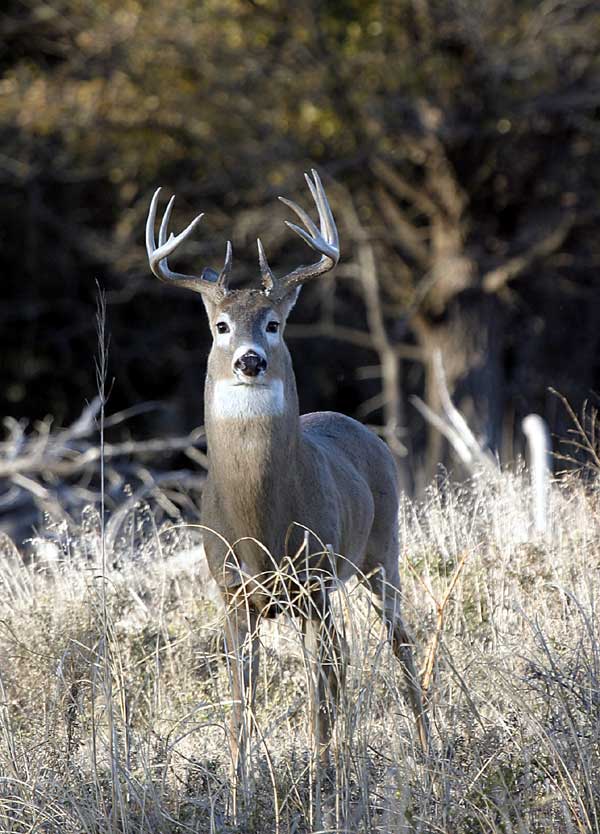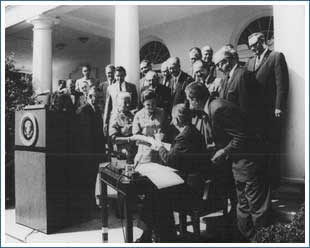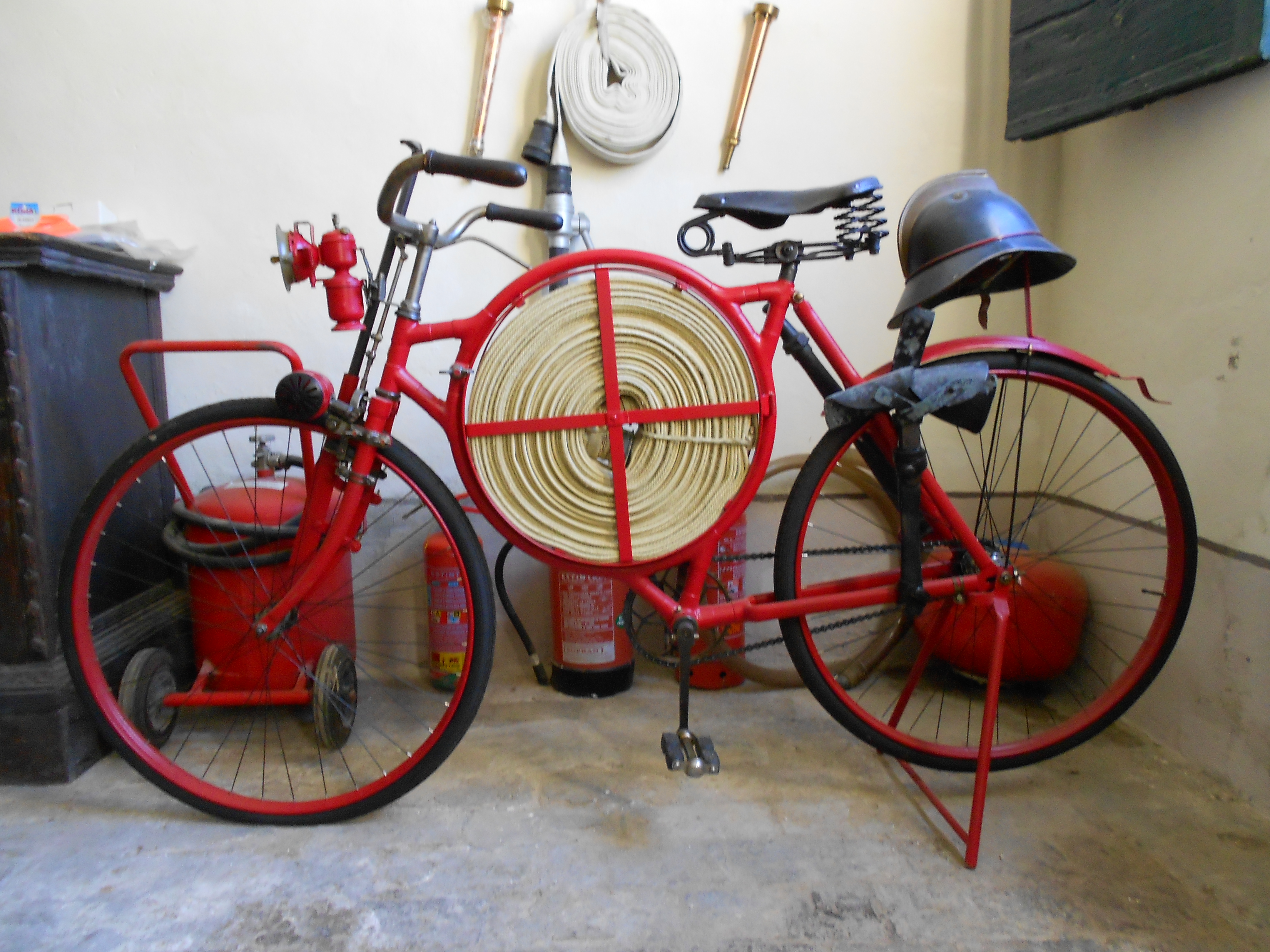|
Soldier Creek Wilderness
Soldier Creek Wilderness is located in the U.S. state of Nebraska. Created by an act of Congress in 1986, the wilderness is managed by the U.S. Forest Service and covers an area of 7,794 acres (31.54 km2) within the Pine Ridge section of the Nebraska National Forest. The wilderness experienced a large wildfire in 1989, which destroyed almost 90 percent of the ponderosa pine forest, which today is slowly rebounding. The Bald eagle can be found here, as can white-tailed deer, mule deer, bobcats, coyotes and numerous other mammals. The region, which was originally established as a timber reservation for nearby Fort Robinson, was utilized by the U.S. Cavalry from the late 19th century through World War II for its excellent horse pastures along Soldier Creek. A series of trails pass two windmills that are still functioning, even though they are not maintained and are over 100 years old. A popular destination for horseback riding, the wilderness is the larger of the two federally ... [...More Info...] [...Related Items...] OR: [Wikipedia] [Google] [Baidu] |
Sioux County, Nebraska
Sioux County is a county in the U.S. state of Nebraska. As of the 2010 United States Census, the population was 1,311. Its county seat is Harrison. Sioux County is included in the Scottsbluff, NE Micropolitan Statistical Area. In the Nebraska license plate system, Sioux County is represented by the prefix 80 (it had the 80th-largest number of vehicles registered in the state when the license plate system was established in 1922). Geography Sioux County lies at the NW corner of Nebraska. Its north boundary line abuts the south line of the state of South Dakota and its west boundary line abuts the east boundary line of the state of Wyoming. The Niobrara River flows southeastward and eastward through the upper central part of the county. The county terrain is arid low rolling hills, sloping to the east and southeast. The terrain is sparsely utilized for agriculture, with some center pivot irrigation used. The county has an area of , of which is land and (0.03%) is water. Majo ... [...More Info...] [...Related Items...] OR: [Wikipedia] [Google] [Baidu] |
Windmill
A windmill is a structure that converts wind power into rotational energy using vanes called sails or blades, specifically to mill grain (gristmills), but the term is also extended to windpumps, wind turbines, and other applications, in some parts of the English speaking world. The term wind engine is sometimes used to describe such devices. Windmills were used throughout the high medieval and early modern periods; the horizontal or panemone windmill first appeared in Persia during the 9th century, and the vertical windmill first appeared in northwestern Europe in the 12th century. Regarded as an icon of Dutch culture, there are approximately 1,000 windmills in the Netherlands today. Forerunners Wind-powered machines may have been known earlier, but there is no clear evidence of windmills before the 9th century. Hero of Alexandria (Heron) in first-century Roman Egypt described what appears to be a wind-driven wheel to power a machine.Dietrich Lohrmann, "Von der ... [...More Info...] [...Related Items...] OR: [Wikipedia] [Google] [Baidu] |
Wilderness Act
The Wilderness Act of 1964 () was written by Howard Zahniser of The Wilderness Society. It created the legal definition of wilderness in the United States, and protected 9.1 million acres (37,000 km²) of federal land. The result of a long effort to protect federal wilderness and to create a formal mechanism for designating wilderness, the Wilderness Act was signed into law by President Lyndon B. Johnson on September 3, 1964 after over sixty drafts and eight years of work. The Wilderness Act is well known for its succinct and poetic definition of wilderness: "A wilderness, in contrast with those areas where man and his own works dominate the landscape, is hereby recognized as an area where the earth and its community of life are untrammeled by man, where man himself is a visitor who does not remain." – Howard Zahniser When Congress passed and President Lyndon B. Johnson signed the Wilderness Act on September 3, 1964, it created the National Wilderness Preservation ... [...More Info...] [...Related Items...] OR: [Wikipedia] [Google] [Baidu] |
List Of U
A ''list'' is any set of items in a row. List or lists may also refer to: People * List (surname) Organizations * List College, an undergraduate division of the Jewish Theological Seminary of America * SC Germania List, German rugby union club Other uses * Angle of list, the leaning to either port or starboard of a ship * List (information), an ordered collection of pieces of information ** List (abstract data type) In computer science, a list or sequence is an abstract data type that represents a finite number of ordered values, where the same value may occur more than once. An instance of a list is a computer representation of the mathematical concept of ..., a method to organize data in computer science * List on Sylt, previously called List, the northernmost village in Germany, on the island of Sylt * ''List'', an alternative term for ''roll'' in flight dynamics * To ''list'' a building, etc., in the UK it means to designate it a listed building that may not ... [...More Info...] [...Related Items...] OR: [Wikipedia] [Google] [Baidu] |
Hunting
Hunting is the human practice of seeking, pursuing, capturing, or killing wildlife or feral animals. The most common reasons for humans to hunt are to harvest food (i.e. meat) and useful animal products ( fur/ hide, bone/ tusks, horn/ antler, etc.), for recreation/ taxidermy (see trophy hunting), to remove predators dangerous to humans or domestic animals (e.g. wolf hunting), to eliminate pests and nuisance animals that damage crops/ livestock/ poultry or spread diseases (see varminting), for trade/tourism (see safari), or for ecological conservation against overpopulation and invasive species. Recreationally hunted species are generally referred to as the '' game'', and are usually mammals and birds. A person participating in a hunt is a hunter or (less commonly) huntsman; a natural area used for hunting is called a game reserve; an experienced hunter who helps organize a hunt and/or manage the game reserve is known as a gamekeeper. Many non-human anima ... [...More Info...] [...Related Items...] OR: [Wikipedia] [Google] [Baidu] |
Bureau Of Land Management
The Bureau of Land Management (BLM) is an agency within the United States Department of the Interior responsible for administering federal lands. Headquartered in Washington DC, and with oversight over , it governs one eighth of the country's landmass. President Harry S. Truman created the BLM in 1946 by combining two existing agencies: the General Land Office and the Grazing Service. The agency manages the federal government's nearly of subsurface mineral estate located beneath federal, state and private lands severed from their surface rights by the Homestead Act of 1862. Most BLM public lands are located in these 12 western states: Alaska, Arizona, California, Colorado, Idaho, Montana, Nevada, New Mexico, Oregon, Utah, Washington and Wyoming. The mission of the BLM is "to sustain the health, diversity, and productivity of the public lands for the use and enjoyment of present and future generations." Originally BLM holdings were described as "land nobody w ... [...More Info...] [...Related Items...] OR: [Wikipedia] [Google] [Baidu] |
Mining
Mining is the extraction of valuable minerals or other geological materials from the Earth, usually from an ore body, lode, vein, seam, reef, or placer deposit. The exploitation of these deposits for raw material is based on the economic viability of investing in the equipment, labor, and energy required to extract, refine and transport the materials found at the mine to manufacturers who can use the material. Ores recovered by mining include metals, coal, oil shale, gemstones, limestone, chalk, dimension stone, rock salt, potash, gravel, and clay. Mining is required to obtain most materials that cannot be grown through agricultural processes, or feasibly created artificially in a laboratory or factory. Mining in a wider sense includes extraction of any non-renewable resource such as petroleum, natural gas, or even water. Modern mining processes involve prospecting for ore bodies, analysis of the profit potential of a proposed mine, extraction of the desire ... [...More Info...] [...Related Items...] OR: [Wikipedia] [Google] [Baidu] |
Forestry
Forestry is the science and craft of creating, managing, planting, using, conserving and repairing forests, woodlands, and associated resources for human and environmental benefits. Forestry is practiced in plantations and natural stands. The science of forestry has elements that belong to the biological, physical, social, political and managerial sciences. Forest management play essential role of creation and modification of habitats and affect ecosystem services provisioning. Modern forestry generally embraces a broad range of concerns, in what is known as multiple-use management, including: the provision of timber, fuel wood, wildlife habitat, natural water quality management, recreation, landscape and community protection, employment, aesthetically appealing landscapes, biodiversity management, watershed management, erosion control, and preserving forests as "sinks" for atmospheric carbon dioxide. Forest ecosystems have come to be seen as the most important comp ... [...More Info...] [...Related Items...] OR: [Wikipedia] [Google] [Baidu] |
Fishing
Fishing is the activity of trying to catch fish. Fish are often caught as wildlife from the natural environment, but may also be caught from stocked bodies of water such as ponds, canals, park wetlands and reservoirs. Fishing techniques include hand-gathering, spearing, netting, angling, shooting and trapping, as well as more destructive and often illegal techniques such as electrocution, blasting and poisoning. The term fishing broadly includes catching aquatic animals other than fish, such as crustaceans (shrimp/lobsters/ crabs), shellfish, cephalopods (octopus/squid) and echinoderms (starfish/sea urchins). The term is not normally applied to harvesting fish raised in controlled cultivations ( fish farming). Nor is it normally applied to hunting aquatic mammals, where terms like whaling and sealing are used instead. Fishing has been an important part of human culture since hunter-gatherer times, and is one of the few food production activities that ha ... [...More Info...] [...Related Items...] OR: [Wikipedia] [Google] [Baidu] |
Camping
Camping is an outdoor activity involving overnight stays away from home, either without shelter or using basic shelter such as a tent, or a recreational vehicle. Typically, participants leave developed areas to spend time outdoors in more natural ones in pursuit of activities providing them enjoyment or an educational experience. The night (or more) spent outdoors distinguishes camping from day-tripping, picnicking, and other similarly short-term recreational activities. Camping as a recreational activity became popular among elites in the early 20th century. With time, it grew in popularity among other socioeconomic classes. Modern campers frequent publicly owned natural resources such as national and state parks, wilderness areas, and commercial campgrounds. In a few countries, such as Sweden and Scotland, public camping is legal on privately held land as well. Camping is a key part of many youth organizations around the world, such as Scouting, which use it to teach both s ... [...More Info...] [...Related Items...] OR: [Wikipedia] [Google] [Baidu] |
Bicycle
A bicycle, also called a pedal cycle, bike or cycle, is a human-powered transport, human-powered or motorized bicycle, motor-powered assisted, bicycle pedal, pedal-driven, single-track vehicle, having two bicycle wheel, wheels attached to a bicycle frame, frame, one behind the other. A is called a cyclist, or bicyclist. Bicycles were introduced in the 19th century in Europe. By the early 21st century, more than 1 billion were in existence. These numbers far exceed the number of cars, both in total and ranked by the number of individual models produced. They are the principal means of transportation in many regions. They also provide a popular form of recreation, and have been adapted for use as children's toys, Physical fitness, general fitness, military and police applications, courier services, bicycle racing, and bicycle stunts. The basic shape and configuration of a typical Safety bicycle, upright or "safety bicycle", has changed little since the first Chain drive, ... [...More Info...] [...Related Items...] OR: [Wikipedia] [Google] [Baidu] |
Mechanization
Mechanization is the process of changing from working largely or exclusively by hand or with animals to doing that work with machinery. In an early engineering text a machine is defined as follows: In some fields, mechanization includes the use of hand tools. In modern usage, such as in engineering or economics, mechanization implies machinery more complex than hand tools and would not include simple devices such as an ungeared horse or donkey mill. Devices that cause speed changes or changes to or from reciprocating to rotary motion, using means such as gears, pulleys or sheaves and belts, shafts, cams and cranks, usually are considered machines. After electrification, when most small machinery was no longer hand powered, mechanization was synonymous with motorized machines. Extension of mechanization of the production process is termed as automation and it is controlled by a closed loop system in which feedback is provided by the sensors. In an automated machine the ... [...More Info...] [...Related Items...] OR: [Wikipedia] [Google] [Baidu] |









